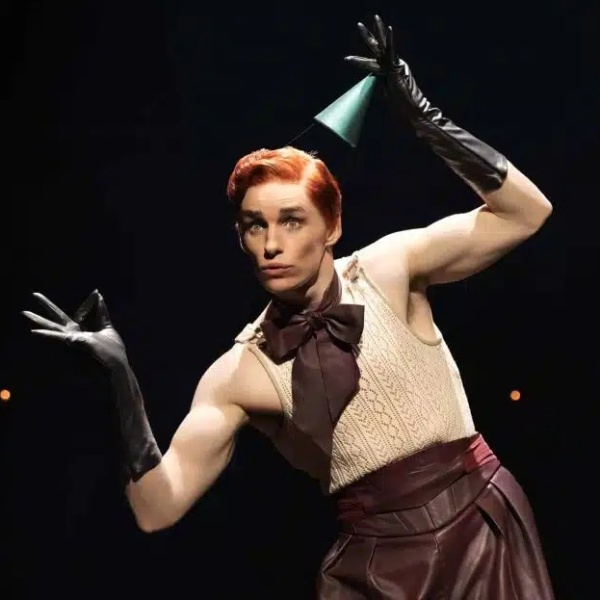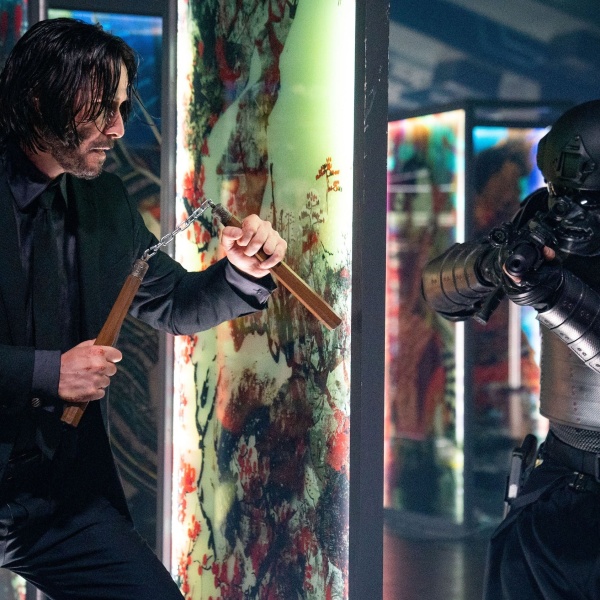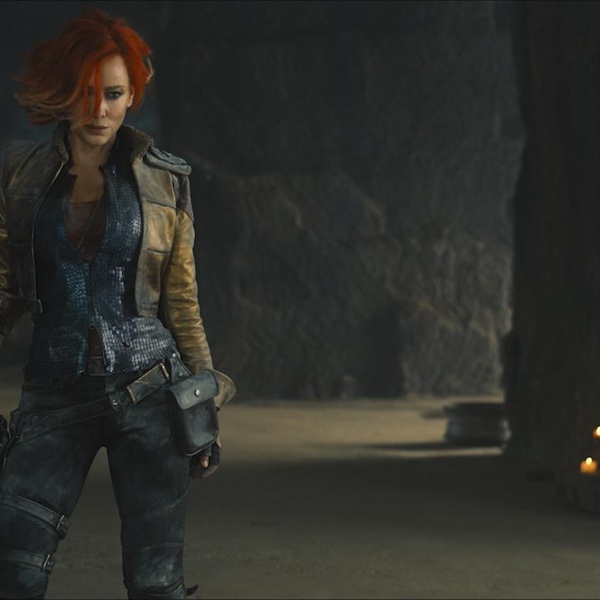And More We Learned From Our Chat With Filmmakers Stephen Anderson & Don Hal

This weekend a sweet, handsomely made family film overtook all box office records… And it sure wasn’t “Winnie the Pooh.” Left reeling in the boy wizard’s wake (it debuted in the bottom half of the top 10), it doesn’t make “Winnie the Pooh” any less wonderful. We also have faith that the audience will find “Winnie the Pooh,” if not during its initial theatrical run, then over its long life on home video (its got a timelessness that lends itself to later being dubbed a “classic”).
Last week we got to talk to the film’s directors Stephen Anderson and Don Hall. The duo, veterans from Walt Disney Animation‘s story department, were given the tough task of bringing A.A. Milne‘s Winnie the Pooh (and the rest of the Hundred Acre Wood gang) into 2011 while also maintaining what makes them such irrepressibly cuddly icons. We spoke to the directors and learned several interesting things about the project, including how “The Book of Mormon” writer Robert Lopez brought to mind some other Disney legends as he wrote songs for the flick, which Winnie the Pooh theme park attraction they’d never ridden, and why Zooey Deschanel was hired to sing on the film.

1. Their Story Background Was Invaluable
Both Stephen Anderson and Don Hall have a background in Disney animation’s story department. Anderson worked first as a storyboard artist on “Tarzan” before serving as story supervisor for “The Emperor’s New Groove” and “Brother Bear.” (He jumped to 3D as the director of “Meet the Robinsons,” as well as providing story elements to last year’s “Tangled.”) Hall has worked on the story department (in various capacities) for almost every major Disney animated film in the past couple of decades, contributing to the screenplay for Anderson’s “Meet the Robinsons.” Their background proved ideal for “Winnie the Pooh,” whose skeletal narrative actually weaves three A.A. Milne stories together.
“The story department is perfect training, because you’re thinking about story night and day, 24 hours a day,” Don Hall explained. “Having the ability to think of story in three dimensions certainly helps while you’re directing, since the hardest aspect of any film is cracking the story.”
Anderson elaborated: “One of the things you learn in the story department is collaboration. At a certain point, though, as a story artist, you pass it off to someone else. What’s great about directing is you get to continue with that story. You get to continue that collaboration not just in one department – but in all of them!”
2. Taking Charge Of Such a Beloved Character Can Be Nerve Wracking
This is a fairly important character, not only because it’s the first major use of the license since Disney outright bought the Winnie the Pooh rights in 2001 for $350 million (“Piglet’s Big Movie” and “Pooh’s Heffalump Movie” felt more like television specials that had somehow snuck into theaters), but also because the movie had to introduce an older character to a new audience. And it was Don Hall’s first directorial gig!
“There was a little bit of trepidation early on,” Hall said. “Just because we knew how important the character was to the company as one of the franchises. But we put a lot of time and effort into research – we read all the stories, we watched all the old shorts, we actually went to Hundred Acre Wood (in Sussex, England). We did our homework. And all that kind of trepidation melted away.”
3. You Could Have Called This “Winnie the Pooh Begins”
Faced with decades of previous material to comb through, it became a tough choice to figure out what to use and what to highlight from previous adaptations and the original source material.
“Our mantra on this project was to return Winnie the Pooh to his roots,” Anderson said. “And not just his cinematic roots but also his literary roots. So we went right back to the Milne stories and also the classic Disney featurettes. And the primary thing we came away with was how funny they are. The Milne stories and the Disney shorts, these characters are so well drawn (literally and personality wise), that there’s great humor in pitting those personalities against each other.”
Don elaborated: “I had never read the Milne stories before and I was blown away because I had laughed out loud. My perception of Pooh was only for small children but the writing was so smart that it worked for parents and for kids – and everyone in between!”
4. There Was One Place They Didn’t Get Inspiration From
Parts of the new movie, particularly the way the characters interact with the pages of the unfolding book, brought to mind Pooh’s Hunny Hunt, a technologically innovative ride that opened in 2000 at the Tokyo Disneyland theme park. The attraction has you boarding a honey put, which, thanks to “trackless” technology appears to be gliding, and are thrust into a Winnie the Pooh adventure. It’s the most popular ride in that park’s Fantasyland section.
The filmmakers though, weren’t inspired. “We’ve heard some great things about it, but it was closed for maintenance when I was there” Anderson said. Hall added: “Somebody brought in a video that was posted on You Tube, so we did watch it. It looks pretty cool.”
5. Casting Was A Bit Touchy
These characters are beloved for a reason, and have been both seen and heard for decades. So when it came to casting vocal talent for the characters, the filmmakers knew they were getting into some sensitive territory.
“Really early on we asked ourselves the question – which of these voices need to be imitations of the original voices and which ones can be more interpretations of them. We realized characters like Pooh, Tigger, Piglet, Eeyore, needed to sound exactly like the way we’ve heard them, because if you change those voices, people are going to riot,” Anderson said. “So we figured the rest of the characters we could play around with. So that’s why we went with Jim Cummings for Pooh and Tigger because he’s been doing those voices since the mid-80s. But with Rabbit and Owl we changed things up a little bit.”
The casting difficulties stretched into finding animators for each role, too, since the smaller scale of the hand-drawn animation team meant there was an abundance of animators that could have taken on each role. “We had a dream team of animators that had just come off ‘Princess and the Frog.’ It was a wonderful problem to have – a limited cast and all these amazing animators.”
6. Zooey Deschanel’s Old Timey Style Landed Her the Job
Those in the audience who are old enough to have watched more bawdy comedic fare like “Your Highness” might be surprised to hear Zooey Deschanel warbling over some classic “Winnie the Pooh” songs (like the immortal original theme song) as well as some of the new cuts. And it’s the combination of her modernity, mixed with her old timey inflection (as heard in her band She & Him) that ultimately secured her the gig.
Hall summed it up: “We have a really awesome music department here and they provided us with a list of what he thought was appropriate artists. We were trying to stay in the present but be faithful to what had been done, so musically that’s a tough list to come up with. When Stephen and I saw the list we knew she would be perfect for it.”
7. Songwriter Robert Lopez Brought To Mind Some Genuine Disney Legends
“He has such a big head, it’s impossible to work with him – all those Tonys!” Anderson joked about their big-name songwriter Robert Lopez, who just swept the Tonys as a co-creator of “Book of Mormon” and who, with his wife Kristen, wrote the songs for “Winnie the Pooh.”
“Right off the bat, they got the charm and the heart and it was never a strain for them to be funny. So they have that perfect blend,” Anderson said. It was a blend that reminded him of the prolific, downright legendary songwriting team (seriously, Netflix the documentary “The Boys“) that had once composed tracks for Winnie the Pooh and friends.
“Just like the Sherman Brothers,” he continued, “who used to write songs for the original shorts. Bobby and Kristen really embraced that.”
Hall added to the parallel: “Had they lived in California, they probably would have been part of our story meetings everyday. That’s how we imagined it was with the Sherman Brothers. But unfortunately, they choose to live in New York.”
8. Things Started Out Quite Open-Ended
Originally, the film started off as a series of vignettes, sequences so small that the initial plan was to mix and match new sequences with some of the older short films (sort of like “Fantasia 2000“). But an air of looseness and experimentation ultimately gave way to the considerably more streamlined final product.
“The mandate from the beginning was just to take a look at Winnie the Pooh,” Hall said. “We didn’t know if we were making a short film or DVDs or what. Our thought process is pretty unchanged since the days of Walt, where we begin with what they call ‘deep boards’ – just visually exploring the possibilities of the story. So we brought on Burny Mattison,” a legendary Disney artist who worked on the original “Winnie the Poohs” and has been with the studio for over 50 years. One of the boards Burny did was “Eeyore loses his tail.”
Pixar bigwig John Lasseter, now effectively running the creative side of the entire Walt Disney company, loved the idea and urged the filmmakers to bring it up in a meeting with top Disney brass. At the end of the meeting, they just said, according to Hall, “Can you give us a feature?” Which is an incredible way to begin a movie – and end a conversation – with the image of a bunch of Disney big shots sitting around a table, deeply engrossed in the plight of Eeyore’s tail.
If you want to be equally engrossed, check out Disney’s wonderful “Winnie the Pooh,” in theaters now.



